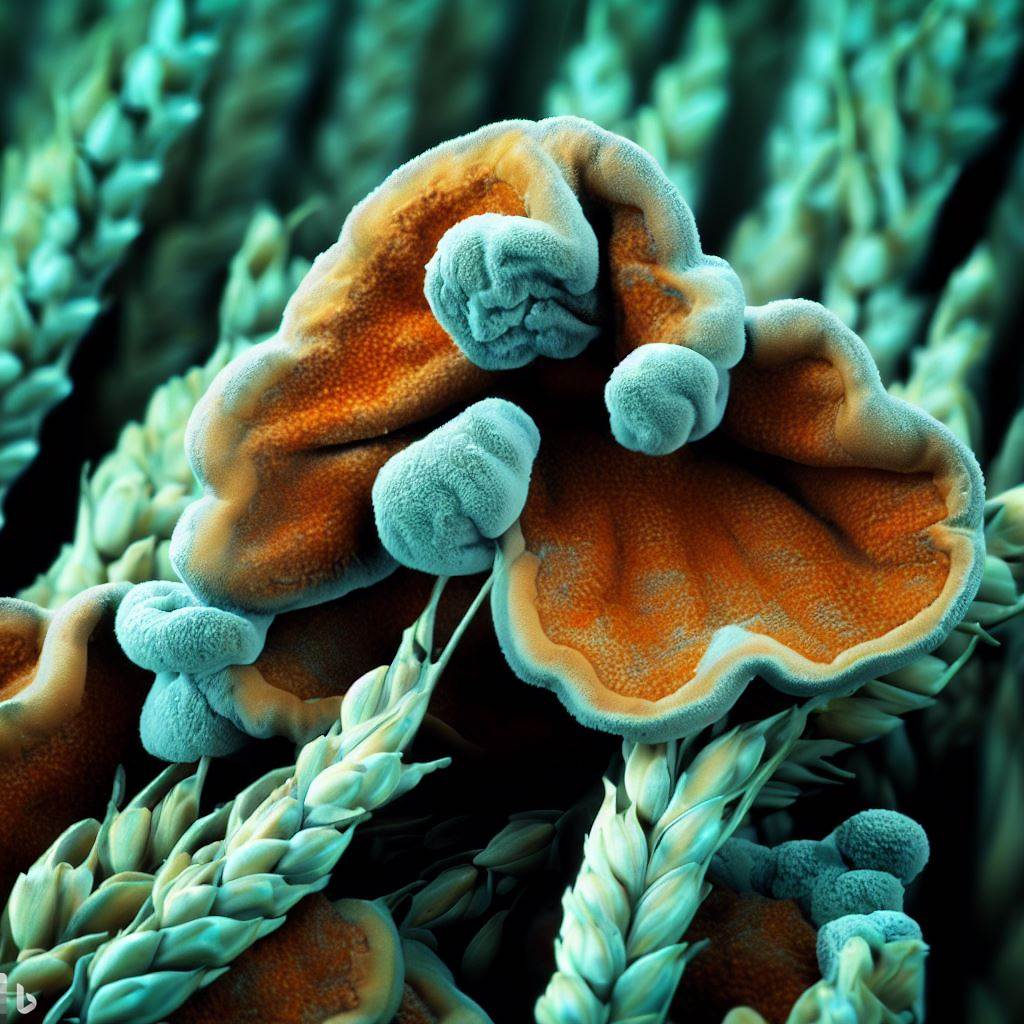A team of scientists from the Agricultural Research Service (ARS) and South Dakota State University (SDSU) has discovered an extraordinary virus that could deal a devastating blow to a notorious fungal menace wreaking havoc on small-grain crops such as wheat and barley.
Enter the formidable enemy: Fusarium graminearum, the malefactor responsible for a devastating plant disease known as Fusarium head blight or “scab.” This nefarious fungus, left unchecked, mercilessly ravages crops, causing substantial reductions in both yield and grain quality. To add insult to injury, under wet and humid conditions, the scab fungus releases a deadly toxin called deoxynivalenol, more ominously known as vomitoxin. This insidious toxin infiltrates the grain, reducing its market value or, in severe cases, leading to outright rejection based on its intended use.
Vomitoxin is also a malevolent trichothecene mycotoxin, which emerges as a formidable adversary in the realm of mycotoxins that infest our grains and forages. Unlike its more overtly sinister counterparts, vomitoxin reveals itself subtly, causing a chilling reduction in feed intake and a haunting decline in performance. This insidious mycotoxin penetrates the core of its victims, manipulating their central nervous systems. While not a known carcinogen like aflatoxin, vomitoxin still wreaks acute havoc, necessitating the consumption of copious amounts of contaminated grain to succumb to its toxic grasp. Chronic exposure poses an uncertain veil obscuring its long-term effects. Livestock and farm animals suffer its tyranny, experiencing weight loss and refusal to consume feed as vomitoxin stealthily infiltrates their sustenance.
But now, a glimmer of hope shines on the horizon. The intrepid scientists from the ARS Application Technology Research Unit and SDSU have unearthed a natural virus, known as a mycovirus, that disrupts the vomitoxin-producing machinery of the scab fungus.
In the intricate dance of nature, this mycovirus, specifically Fusarium graminearaum Vg1, infects the scab fungus, replicating within it and spreading further. However, the newly discovered strain of mycovirus, aptly named F. graminearum Vg1-SD4, takes the battle against scab to a whole new level by rendering the fungus incapable of producing vomitoxin—an unexpected boon for wheat plants.
Laboratory and greenhouse experiments have proven nothing short of extraordinary. The scab fungus cultures infected with the mycovirus strain exhibited stunted growth and, astonishingly, failed to produce any vomitoxin in the grain of susceptible potted wheat plants. In stark contrast, wheat plants exposed to mycovirus-free scab cultures yielded grain containing a staggering 18 parts per million (ppm) of vomitoxin—a dangerous byproduct detrimental to both livestock and human health.
Dr. Shin-Yi Lee Marzano, an exceptional molecular biologist from ARS, and her brilliant collaborators paved the way for this game-changing revelation. Through meticulous sequencing of the mycovirus’s genetic makeup, they discerned subtle variations from its “parent” species, FgVg1, which had been maintained in a live culture of the scab fungus for nearly a decade, representing a treasure trove of scientific knowledge.
While Dr. Marzano prudently acknowledged that their research, documented in the esteemed July 2022 edition of Microorganisms, remains in its nascent stages, the potential implications are undeniably immense. With further investigation, this extraordinary mycovirus strain could evolve into a biological control agent, formulated and expertly sprayed onto vulnerable wheat varieties and other small-grain crops. This breakthrough solution holds the promise of sparing farmers from incurring crippling losses due to scab infestation and the consequent contamination of grain, destined for both animal and human consumption.
Bimal Paudel and Yang Yen, esteemed experts from SDSU’s Department of Biology and Microbiology, along with Connar Pedersen (formerly of SDSU and now ARS), have played pivotal roles alongside Dr. Marzano in unraveling the secrets of this mycovirus strain, propelling us ever closer to a sustainable, scab-free agricultural future.
As we witness the dawning of this epochal discovery, the realm of agriculture stands on the cusp of a remarkable transformation. Nature’s virus warriors, armed with their devastating mycovirus allies, may soon usher in an era of unparalleled crop protection, safeguarding our precious wheat, barley, and other small-grain crops from the clutches of scab. It is a testament to the ingenuity of human curiosity and scientific endeavor, reminding us that solutions to our most formidable challenges often lie hidden in the intricacies of the natural world.



